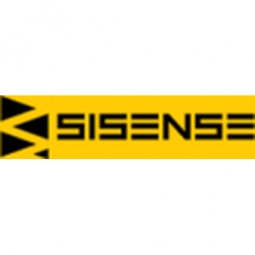Customer Company Size
Mid-size Company
Region
- America
Country
- United States
Product
- Sisense
Tech Stack
- Data Analytics
- Business Intelligence (BI)
- Financial Reporting
Implementation Scale
- Enterprise-wide Deployment
Impact Metrics
- Customer Satisfaction
- Productivity Improvements
- Digital Expertise
Technology Category
- Analytics & Modeling - Big Data Analytics
- Analytics & Modeling - Predictive Analytics
- Application Infrastructure & Middleware - Data Exchange & Integration
Applicable Industries
- Healthcare & Hospitals
Applicable Functions
- Business Operation
- Quality Assurance
- Sales & Marketing
Use Cases
- Real-Time Location System (RTLS)
Services
- Data Science Services
- System Integration
- Training
About The Customer
Trupanion, founded in Vancouver, Canada in 1999 and later relocated to the United States, is the second-largest and fastest-growing pet insurance company in North America. The company helps pet owners pay for veterinary bills if their pets get sick or injured. Trupanion is committed to providing value to its clients through fair and accurate pricing. With continued growth, the company required accurate, comprehensive, and immediate information regarding its sales, customer service, and retention operations. The company built an actuarial department and, in 2012, created a BI team to handle its growing data needs.
The Challenge
Trupanion faced challenges in managing and analyzing large volumes of data across multiple departments. The company needed a solution to track real-time performance, optimize marketing opportunities, and build accurate financial reports. Existing in-house solutions were time-consuming and prone to inaccuracies, leading to a need for a robust BI tool that could be easily used by non-technical users and deployed quickly.
The Solution
Trupanion selected Sisense as its BI tool due to its accurate and reliable data management capabilities, quick deployment, and user-friendly platform. Sisense allowed Trupanion to serve different audiences, including executives, regional managers, and front-line users, without requiring technical expertise. The tool enabled the company to gain deeper insights into market segments, monitor pricing and customer retention, and marry acquisition costs with customer lifetime values. Sisense's quick and light deployment allowed Trupanion to get proof of concept easily and quickly, meeting their need for a robust yet user-friendly BI solution.
Operational Impact

Case Study missing?
Start adding your own!
Register with your work email and create a new case study profile for your business.
Related Case Studies.

Case Study
Hospital Inventory Management
The hospital supply chain team is responsible for ensuring that the right medical supplies are readily available to clinicians when and where needed, and to do so in the most efficient manner possible. However, many of the systems and processes in use at the cancer center for supply chain management were not best suited to support these goals. Barcoding technology, a commonly used method for inventory management of medical supplies, is labor intensive, time consuming, does not provide real-time visibility into inventory levels and can be prone to error. Consequently, the lack of accurate and real-time visibility into inventory levels across multiple supply rooms in multiple hospital facilities creates additional inefficiency in the system causing over-ordering, hoarding, and wasted supplies. Other sources of waste and cost were also identified as candidates for improvement. Existing systems and processes did not provide adequate security for high-cost inventory within the hospital, which was another driver of cost. A lack of visibility into expiration dates for supplies resulted in supplies being wasted due to past expiry dates. Storage of supplies was also a key consideration given the location of the cancer center’s facilities in a dense urban setting, where space is always at a premium. In order to address the challenges outlined above, the hospital sought a solution that would provide real-time inventory information with high levels of accuracy, reduce the level of manual effort required and enable data driven decision making to ensure that the right supplies were readily available to clinicians in the right location at the right time.

Case Study
Gas Pipeline Monitoring System for Hospitals
This system integrator focuses on providing centralized gas pipeline monitoring systems for hospitals. The service they provide makes it possible for hospitals to reduce both maintenance and labor costs. Since hospitals may not have an existing network suitable for this type of system, GPRS communication provides an easy and ready-to-use solution for remote, distributed monitoring systems System Requirements - GPRS communication - Seamless connection with SCADA software - Simple, front-end control capability - Expandable I/O channels - Combine AI, DI, and DO channels

Case Study
Driving Digital Transformations for Vitro Diagnostic Medical Devices
Diagnostic devices play a vital role in helping to improve healthcare delivery. In fact, an estimated 60 percent of the world’s medical decisions are made with support from in vitrodiagnostics (IVD) solutions, such as those provided by Roche Diagnostics, an industry leader. As the demand for medical diagnostic services grows rapidly in hospitals and clinics across China, so does the market for IVD solutions. In addition, the typically high cost of these diagnostic devices means that comprehensive post-sales services are needed. Wanteed to improve three portions of thr IVD:1. Remotely monitor and manage IVD devices as fixed assets.2. Optimizing device availability with predictive maintenance.3. Recommending the best IVD solution for a customer’s needs.

Case Study
HaemoCloud Global Blood Management System
1) Deliver a connected digital product system to protect and increase the differentiated value of Haemonetics blood and plasma solutions. 2) Improve patient outcomes by increasing the efficiency of blood supply flows. 3) Navigate and satisfy a complex web of global regulatory compliance requirements. 4) Reduce costly and labor-intensive maintenance procedures.

Case Study
Cloud-based healthcare solution for Royal Philips
Royal Philips wanted to launch its cloud-based healthcare solution HealthSuite Digital Platform in China to deliver services to help cope with challenges related to urbanization and population growth. Philips wanted to achieve this goal by combining mobile, cloud computing and big data technologies. To bring this platform and product to market, Philips required cloud computing and local technical service capabilities in China, in addition to a flexible IT infrastructure that could handle user requests.








